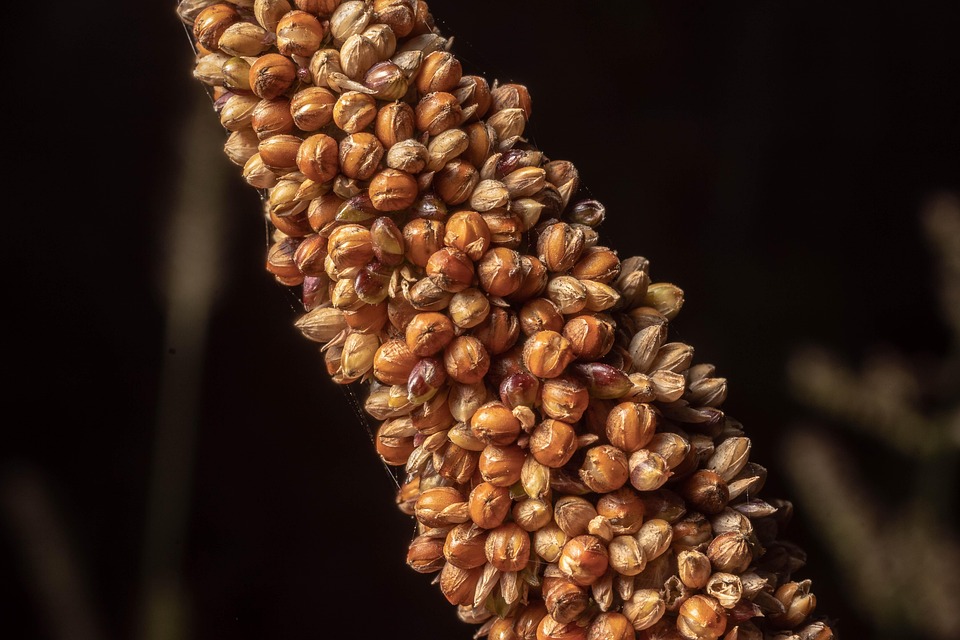# Regenerative Agriculture: Restoring Soil Health for Future Generations
It was a bright sunny morning when I first stepped onto a piece of land that seemed to breathe life. As I gazed at the rich, dark soil glistening with dew, I felt a tingle of excitement. This land wasn’t just any farmland—it was a canvas for regenerative agriculture! With every seed I planted, I couldn’t help but envision a future where healthy soil leads to a thriving ecosystem, abundant harvests, and a healthier planet. Regenerative agriculture isn’t just a method for growing food; it’s a revolution for revitalizing our Earth. So, let’s dig in and explore this transformative approach to farming!
## What is Regenerative Agriculture?
Regenerative agriculture is an ecological approach to farming that focuses on restoring and enhancing the health of soil, biodiversity, and ecosystems. Unlike conventional farming, which often depletes soil fertility through chemical inputs and monoculture practices, regenerative methods aim to not just sustain but regenerate the land. The core philosophy revolves around the idea that healthy soil is the foundation of healthy food systems and resilient communities.
The key practices include:
1. **Cover Cropping:** Utilizing plants like clover or vetch to cover the soil during off-seasons, protecting it from erosion and adding organic matter once tilled in.
2. **Crop Rotation:** Alternating different crops on the same land to improve soil health and reduce pest infestations.
3. **Reduced Tillage:** Minimizing soil disruption to maintain its structure and biodiversity. Less disturbance leads to better water retention and microbial activity.
4. **Agroforestry:** Integrating trees and shrubs into the agricultural landscape benefits soil and creates habitats for wildlife.
5. **Holistic Grazing:** Managed grazing systems where livestock are moved strategically to allow pasture recovery, enhancing soil health and biodiversity.
## Why is Soil Health Important?
Soil is often referred to as the “living skin of the Earth” due to its complex ecosystem of microorganisms, minerals, and organic matter. Healthy soil has the capacity to store carbon, retain water, and support a diverse community of life. When we maintain soil health, we:
– **Combat Climate Change:** Healthy soils can sequester carbon, mitigating greenhouse gas emissions.
– **Boost Biodiversity:** A rich ecosystem supports diverse plant and animal life, essential for a balanced environment.
– **Improve Food Quality:** Nutrient-rich soil translates to nutrient-dense crops, elevating the health of those who consume them.
– **Promote Resilience:** Healthy soils withstand extreme weather, improve water filtration, and reduce the need for chemical interventions.
## The Benefits of Regenerative Agriculture
Embracing regenerative agriculture offers abundant benefits, not only for farmers and their produce but also for communities and the planet. Here are some standout advantages:
1. **Economic Viability:** By reducing reliance on synthetic fertilizers and pesticides, farmers can lower their costs. Healthier crops yield better market prices and enhance local food sovereignty.
2. **Environmental Resources Management:** Regenerative practices help restore water cycles and reduce erosion, ensuring resources remain for future generations.
3. **Cultural Revival:** Engaging with regenerative practices often reconnects farmers with traditional agricultural knowledge and community-based food systems.
4. **Healthier Ecosystems:** By fostering a diverse ecosystem, regenerative agriculture supports pollinators and helpful insects, creating a balanced agricultural landscape.
5. **Improved Quality of Life:** Involvement in regenerative agriculture often cultivates strong communities, social connections, and a deeper relationship with nature.
## Practical Steps to Implement Regenerative Agriculture
If you’re eager to jump into regenerative practices, here’s how to start your journey on the right foot:
### 1. Assess Your Land
Before making any changes, take some time to understand your land. Conduct a soil test to determine organic matter content, pH levels, and nutrient availability. Knowing your soil’s health will inform what steps you can take.
### 2. Plant Cover Crops
Planting cover crops during fallow periods or between cash crops is crucial. Not only do they prevent erosion, but they also replenish nutrients. Try planting legumes, which fix nitrogen in the soil, or use barley and rye for excellent ground coverage.
### 3. Adopt Crop Rotation
Design a crop rotation schedule. Mixing crops such as legumes with grains enhances soil fertility and disrupts pest cycles. This year, try growing sunflowers next to beans—the sunflowers will attract pollinators, helping your beans thrive!
### 4. Minimize Tillage
Embrace no-till or reduced-till methods wherever possible. Using tools like a no-till drill allows you to plant seeds without disturbing the soil structure.
### 5. Diversify Your Farm
Integrating animals into your agricultural practice can create a symbiotic relationship that boosts soil health. For example, chickens can help control pests, while their droppings return valuable nutrients to the soil.
## Pro Tips for Successful Regenerative Agriculture
1. **Start Small:** Begin with a few regenerative practices. Measure their effects and gradually adopt more techniques.
2. **Engage Your Community:** Collaborate with local farmers or participate in workshops to share knowledge and create a support system.
3. **Embrace Patience:** Regenerative agriculture is a long-term commitment. Celebrate small victories and observe the gradual changes in your land.
4. **Incorporate Indigenous Practices:** Learn from traditional land stewards. Many indigenous practices support biodiversity and ecological balance.
5. **Monitor Soil Health:** Regularly check on your soil. Stay informed about its nutrient levels, microbial activity, and overall vitality.
## Real-World Examples of Regenerative Agriculture Success
Across the globe, numerous farmers are experiences the numerous benefits of regenerative practices:
– **The Rodale Institute** in Pennsylvania is renowned for pioneering regenerative agriculture research, demonstrating improved yields and reduced reliance on chemicals.
– In **New Zealand**, sheep and cattle farmers are adopting holistic grazing methods, seeing a remarkable recovery of soil health and pasture viability.
– **The Savory Institute** promotes agroecological practices that mimic natural grazing patterns, leading to improved soil carbon storage and increased biodiversity.
## Sustainable Agriculture: A Hopeful Future
With climate change and environmental degradation looming, the urgent need for a shift towards regenerative agriculture has never been clearer. Each seed planted with the intention of regeneration is a small act of hope for the planet. By restoring soil health, we are investing in the well-being of our Earth, ourselves, and future generations.
### Join the Movement!
Now more than ever, individuals from all walks of life can contribute to regenerative practices. Whether you’re an urban gardener or managing a large farm, every effort counts. Advocate for sustainable policies, educate those around you, and inspire a community that practices regeneration. Every change made today is a step towards a vibrant tomorrow.
In conclusion, the future of agriculture rests on embracing sustainable methods that prioritize the health of our soils and ecosystems. Welcome to the world of regenerative agriculture—where every action you take nurtures not only your land but also the planet. So grab your spade, cultivate your dreams, and let’s grow a flourishing future together!



